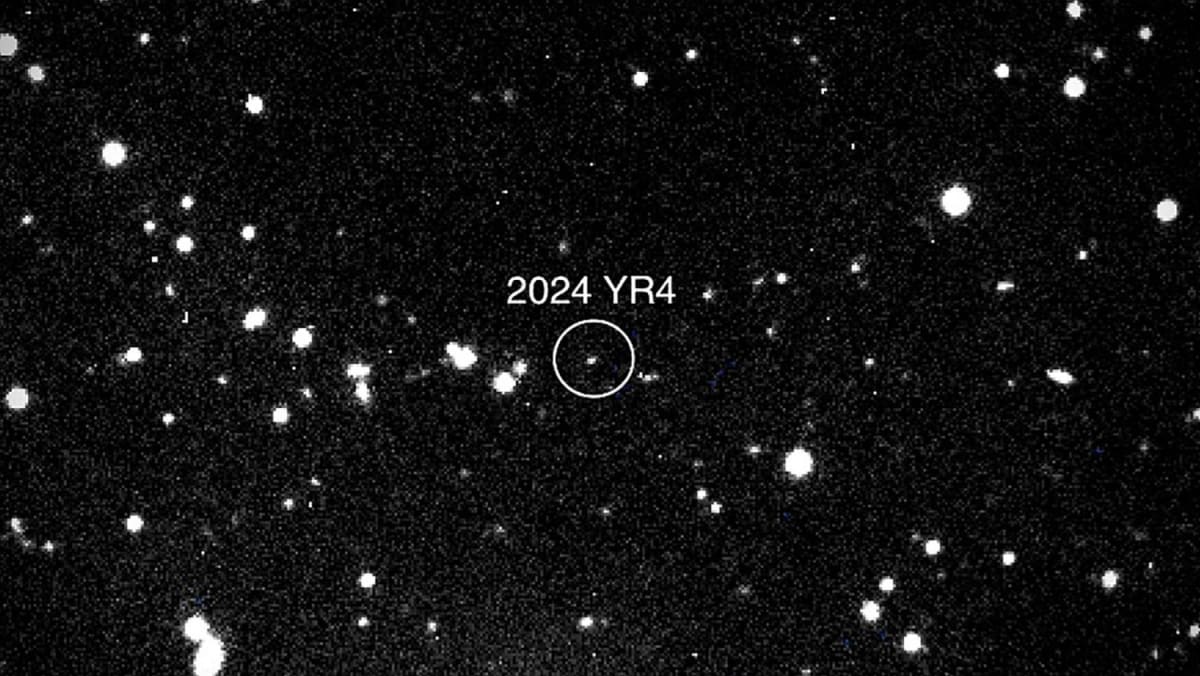Asia
What you need to know about 2024 YR4, the asteroid that could hit Earth in about eight years’ time

Should We Be Worried About the 2024 YR4 Asteroid? What Can the World Do About It?
The Asteroid Threat and Why There’s Still Time to Act
The discovery of the 2024 YR4 asteroid has sparked concern among scientists and the general public alike. While the asteroid’s potential trajectory raises questions about its impact on Earth, experts emphasize that there is ample time to prepare and, if necessary, intervene. The asteroid is still far enough away that scientists can closely monitor its path and make accurate predictions about its trajectory. This long lead time is a critical advantage, as it allows for extensive planning and the implementation of defensive measures. NASA and other space agencies, along with international collaborators, have already demonstrated the feasibility of altering an asteroid’s course through innovative technologies. The key takeaway is that while the asteroid does pose a potential threat, it is not an immediate cause for panic. The world has the tools and the expertise to address this challenge effectively.
NASA’s DART Mission: A Proven Method for Asteroid Deflection
One of the most significant advancements in asteroid deflection technology came with NASA’s Double Asteroid Redirection Test (DART) mission in 2022. Led by Dr. Andrew Rivkin, the mission successfully tested a “kinetic impactor” strategy, which involved crashing a spacecraft into an asteroid to nudge it off its course. The target asteroid, which posed no threat to Earth, was an ideal candidate for this experiment. The mission’s success demonstrated that this method is both viable and effective for altering an asteroid’s trajectory. Dr. Rivkin has expressed confidence that the same approach could be used again if needed, stating, “I don’t see why it wouldn’t work.” The success of the DART mission underscores the importance of continued investment in such technologies and the value of proactive measures in addressing asteroid threats.
Exploring Other Innovative Solutions for Asteroid Deflection
While the kinetic impactor method has proven successful, scientists are also exploring other innovative strategies to deflect asteroids. One such idea involves the use of lasers to vaporize part of an asteroid’s surface, creating a thrust effect that could push it off course. This method, though still experimental, offers a potentially more precise and controlled way to alter an asteroid’s trajectory. Another concept, known as a “gravity tractor,” involves deploying a large spacecraft that would slowly tug the asteroid away from its dangerous path using its own gravitational pull. These experimental approaches highlight the creativity and ingenuity of scientists in addressing the asteroid threat. While they may not yet be ready for implementation, they represent the cutting-edge thinking that could one day save the planet from a catastrophic impact.
China’s Growing Role in Planetary Defense
China has recently taken significant steps to enhance its capabilities in planetary defense, recognizing the growing threat posed by near-Earth asteroids. Just weeks after the discovery of the 2024 YR4 asteroid, a special projects center under China’s State Administration of Science, Technology, and Industry for National Defence posted a recruitment notice for a “planetary defence post.” The notice, reported by the South China Morning Post, outlined three roles focused on asteroid monitoring, early warning systems, and related research. This move reflects China’s commitment to building a robust planetary defense system and its recognition of the importance of international collaboration in addressing this global challenge. Additionally, China has unveiled a conceptual plan for a mission aimed at observing an asteroid and altering its path using a spacecraft. Scheduled for around 2030, this mission would mark China’s first foray into asteroid deflection and demonstrate its growing influence in space exploration and planetary defense.
Preparing for the Worst-Case Scenario: Evacuation and Emergency Planning
In the unlikely event that all deflection attempts fail, the long warning time provided by asteroid monitoring systems allows for effective evacuation planning. Scientists and emergency management officials can work together to identify the potential impact zone and develop strategies to protect people and infrastructure. NASA’s Dr. FAST has reassured the public, stating, “Nobody should be scared about this. We can find these things, make these predictions, and have the ability to plan.” This confidence stems from the advances in asteroid detection and tracking technologies, which provide a high degree of accuracy in predicting an asteroid’s trajectory. While evacuation is a last-resort option, it is a critical component of a comprehensive response plan. By combining deflection technologies with robust emergency preparedness measures, the world can minimize the risks posed by asteroids like 2024 YR4.
The Path Forward: Global Cooperation and Proactive Action
The 2024 YR4 asteroid serves as a reminder of the importance of global cooperation in addressing threats to our planet. While individual nations like the United States and China are taking proactive steps to develop planetary defense capabilities, the asteroid threat is inherently global in nature. Effective solutions will require international collaboration, shared resources, and a unified commitment to safeguarding Earth. Funding for such missions remains a challenge, particularly when the threat does not immediately affect a specific country’s territory. However, the success of the DART mission and the growing involvement of nations like China demonstrate that the global community is capable of coming together to address this challenge. By continuing to invest in asteroid detection, deflection technologies, and emergency preparedness, the world can ensure that it is well-equipped to handle the threat posed by 2024 YR4 and other near-Earth asteroids in the future.











